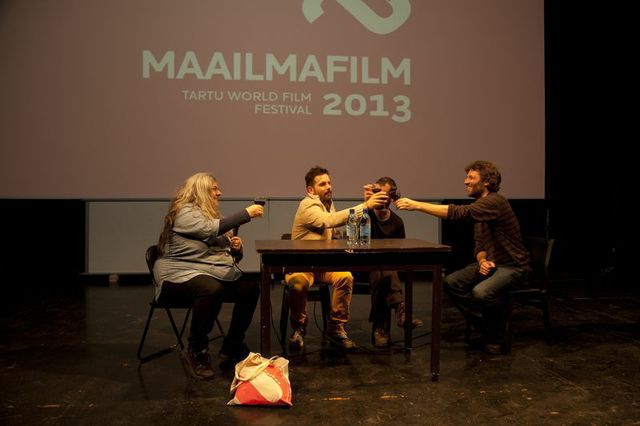Alto do Minho Breathes and Crackles March 21, 2013
Terje Toomistu on Alto do Minho
Alto do Minho is not a documentary that has a narrative, with its start, culmination and solution. Alto do Minho is not a film that gives a sneak peek at carefully selected fragments, that would keep the viewer hooked, so it would be fascinating, so it would be fun. There is no protagonist nor a central theme or ritual to observe with anthropological interest and serve to audience, frame by frame, in all its authenticity. Alto do Minho speaks to the viewer on a different level. Alto do Minho exudes the air of Alto do Minho area - the passion of people living in the mountains of Northern Portugal, their attitude, their self-presentation. The director, trained artist Miguel Filgueiras who originates from this region, filmed the material and made montage himself. He is one of those people who are really not shown in this film, the local youth. The regions music, dance, almost surrealist cultural heritage and joyful everyday life is rather depicted by elderly people and kids. 
During the discussion that followed the film (that had as surreal, funny and ambivalent vibe) Miguel sighed about it deeply, saying this is the sad destiny of the region. Young people have left the villages and prefer nightclubs to those incredible folk parties. This is as sad as the fact that it took five years to find funding for the production. Miguel spent two years filming. He said it was important to have long shooting period as it was crucial to make good contact with local community, to form the basis for the content. It was also fun to film. I would say it was the rhythm. It was the rhythm of the film that allowed to approach the audience in a nonlinear way. The rhythm that led through the film, making the viewer dance in the same vibrations to the Alto Minho people, charmed with technical composition and aesthetics. Montage was used as a tool to show the nuances, form is mirroring the content and I find myself in Portuguese mountains taking part in some next fiesta, where they turn the music so loud, that all the surrounding villages would know where life hives. The sound director, whose contribution is also worth mentioning, is also present in Tartu this week. The film breaths and crackles, and is also creating documentary anthropological knowledge.